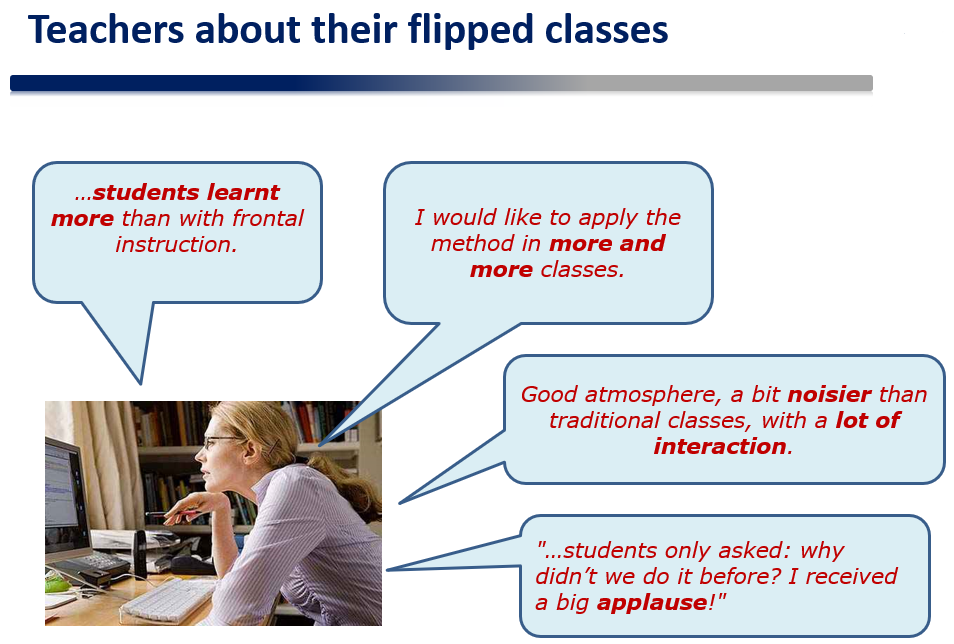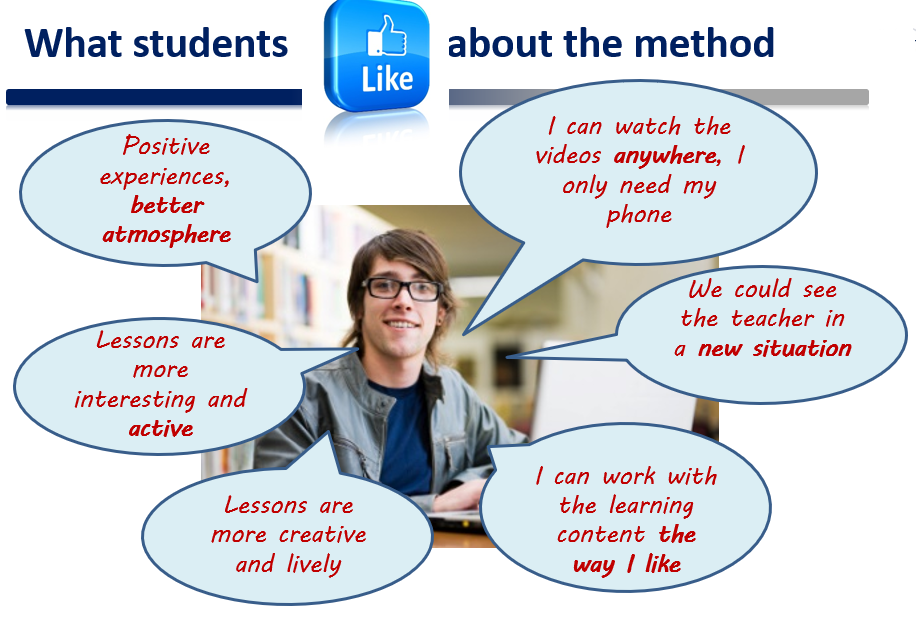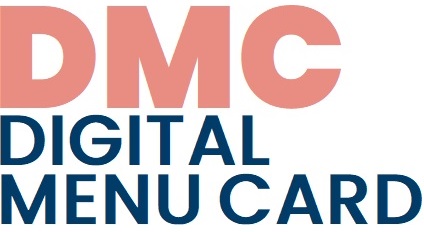- Loghează-te sau înregistrează-te să postezi comentarii
According to the definition of the international non-profit community of teachers (flippedlearning.org) founded by teachers (Jon Bergmann, Aaron Sams) who first applied the method:
“Flipped Learning is a pedagogical approach in which direct instruction moves from the group learning space to the individual learning space, and the resulting group space is transformed into a dynamic, interactive learning environment where the educator guides students as they apply concepts and engage creatively in the subject matter.” (Formal definition by the Flipped Learning Network)
The flipped classroom is ultimately a more student-centred approach to learning whereby students receive lecture materials before class - generally in some digital format - and spend the actual class time undertaking more active, collaborative activities. This approach allows students to learn about the topics outside of class, at their own pace, and come to class informed and more prepared to engage in discussions on the topic and apply their knowledge through active learning. This active learning within the classroom seeks to focus on higher level skills, such as creating, analysing, evaluating.
Moving from a teacher-led, traditional lecture structure to a student-centred, more active pedagogical approach can help students to analyse and reflect on learning and facilitates the development of higher order skills.
The key features of the method that foster active learning:
- flexible environments
- student-centred approach
- intentional content
- professional educators
Source: Mária Hartyányi et al.: Flipped Classroom in practice - Innovating Vocational Education, iTStudy Hungary, Gödöllő, 2018.
The teachers' handbook (linked below) contains - in addition to the knowledge needed to apply the method - the experiences of teachers in vocational education who have tested flipping.
"In my opinion, this method is the key to the future of vocational education where I teach. The audiovisual skills of generations X and Y and the conditions for the use of modern ICT tools make this method the most suitable teaching and learning system. It is a way of developing and strengthening interpersonal skills and competences that seem to be fading away in this age group.
I personally consider this method to be revolutionary, and I recommend it to the whole teaching community, regardless of the subject taught."

- the student-centred model increases student engagement, enhances better understanding and long-term retention of acquired knowledge
- more efficient use of classroom time by focusing on practical application of knowledge
- students arrive to class better prepared, having studied the material in advance
- more opportunities for active learning in the classroom
- helps to involve students in the learning process, increasing their autonomy
- opportunity to create collections of resources that can be used again and again by teachers and students alike
- students of different learning styles can learn effectively
- more opportunities for personal interaction
- promotes the development of higher-order skills through analysis, evaluation, creation, critical thinking and problem solving
- enhances student performance
- can be used with groups of learners having different abilities
What if some students cannot access the video?
- You can copy the material to a USB stick or even arrange for technical equipment that students can take home with them.
What if someone doesn't watch the video?
- There are and always will be students who don't do their homework, we are used to that as teachers. It is not any more different with the FC method.
On the other hand, there are tools that we can use to keep students engaged, and we can build in checkpoints to make sure they have done the assigned task. For example, we can ask them to take notes, or embed the video on a website and connect a GoogleForms questionnaire to it.
You can also place a question in the video itself and the answer is the "entry ticket" to the lesson. There are many ways to check if students do the assigned task. It is important to hold them accountable. Still, if some of them choose not to watch the video before class, you should make them watch it in class while the others are already actively working and getting help from you with the difficult tasks.
We recommend to take a step by step approach. Figure out which class would benefit more from "flipping".
To start with, select a topic that your students usually struggle with. For example, in 4th grade, math teachers say that long division is difficult for students to master. In that case you should build your first flipped lesson around that.

